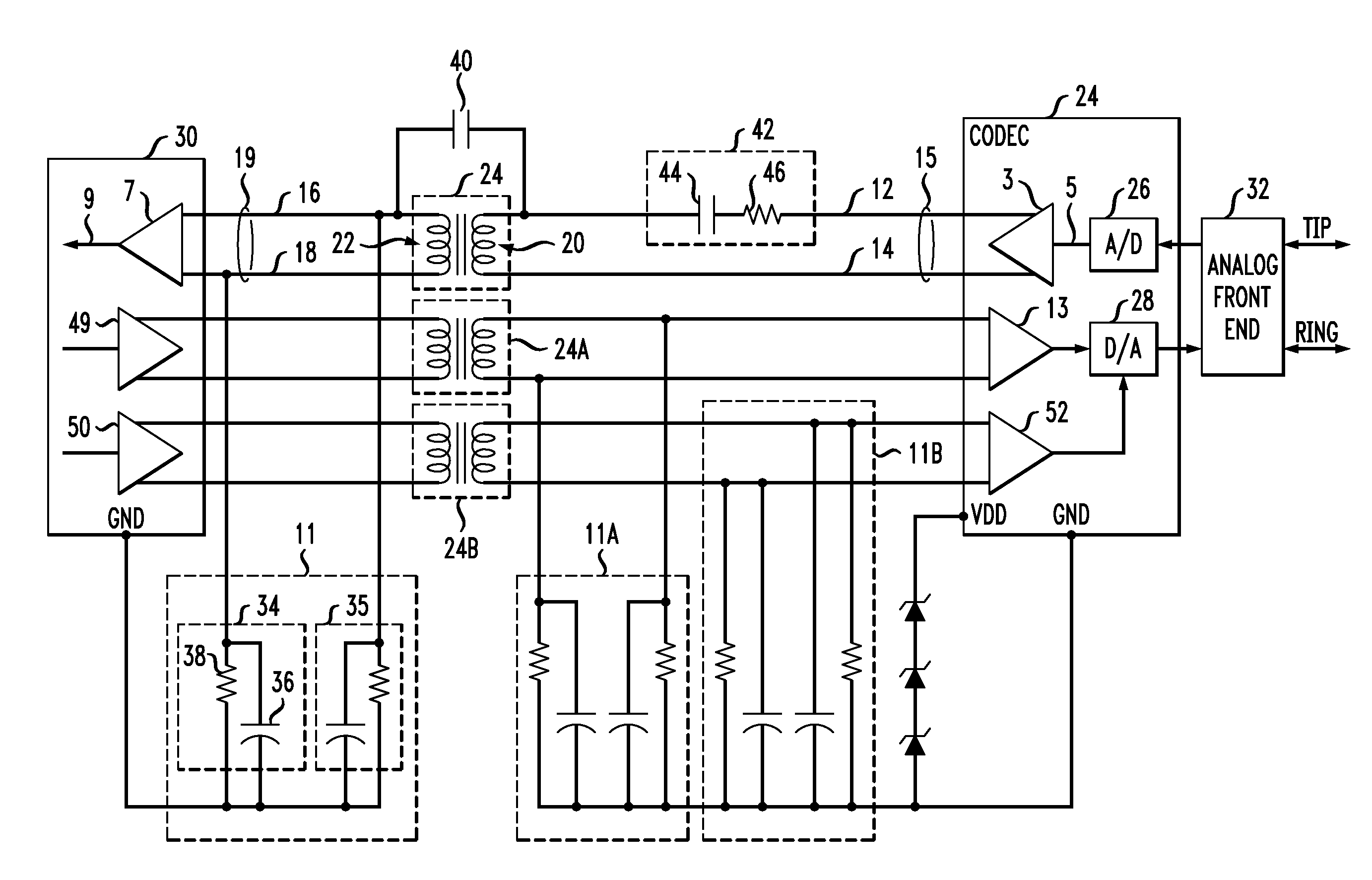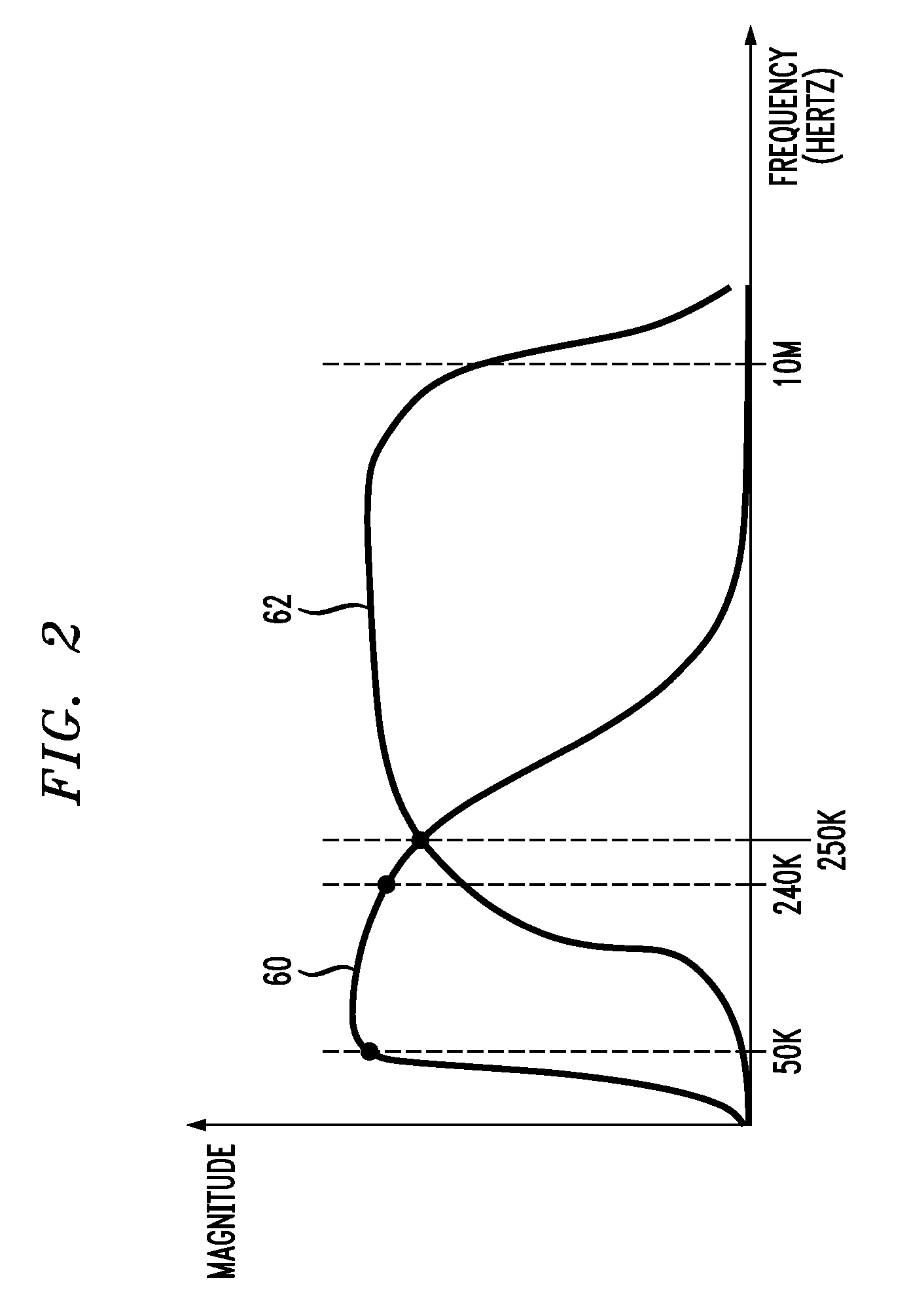Inductive coupling for communications equipment interface circuitry
a communication equipment and interface circuit technology, applied in the field of high-voltage electrical interfaces, can solve the problems of limited success in rejecting high-voltage common-mode signals, high-voltage common-mode signals such as 20-volt peak-to-peak, capacitors capable of withstanding high-voltage common-mode signals, and high-voltage common-mode signals, etc., to achieve the effect of improving attenuation
- Summary
- Abstract
- Description
- Claims
- Application Information
AI Technical Summary
Benefits of technology
Problems solved by technology
Method used
Image
Examples
Embodiment Construction
[0017]FIG. 1 is a mixed block and schematic diagram of an electrical interface 10 in accordance with the present invention. The electrical interface includes a primary inductor 20 and a secondary inductor 22 for operably coupling an input differential signal pair 15 to an output differential signal pair 19. The interface 10 also includes a filter 11 that attenuates a signal occurring in the output differential signal pair 19.
[0018]The primary inductor 20 and the secondary inductor 22 inductively couple the input differential signal pair 15 to the output differential signal pair 19. The inductive coupling also electrically isolates a digital circuit 30 from the TIP and RING contacts of the telephone lines. The electrical isolation function of the primary and secondary inductors prevent telephone equipment from applying voltage surges or ground connections to the telephone lines, and vice versa. The filter 11, in accordance with the invention, attenuates common mode noise signals in t...
PUM
 Login to View More
Login to View More Abstract
Description
Claims
Application Information
 Login to View More
Login to View More - R&D
- Intellectual Property
- Life Sciences
- Materials
- Tech Scout
- Unparalleled Data Quality
- Higher Quality Content
- 60% Fewer Hallucinations
Browse by: Latest US Patents, China's latest patents, Technical Efficacy Thesaurus, Application Domain, Technology Topic, Popular Technical Reports.
© 2025 PatSnap. All rights reserved.Legal|Privacy policy|Modern Slavery Act Transparency Statement|Sitemap|About US| Contact US: help@patsnap.com



